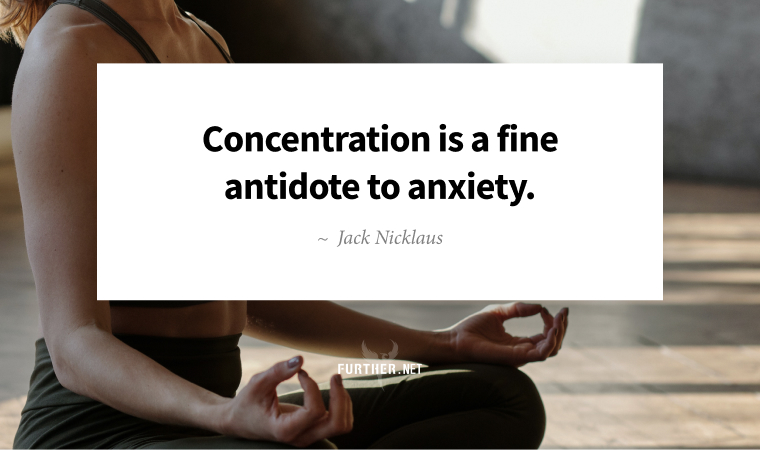
In the last decade of his life, Ludwig van Beethoven composed the greatest triumph of his remarkable body of musical work — the Ninth Symphony. That alone should be motivation to keep going.
But what’s truly remarkable is that Beethoven was deaf. His hearing began to decline around age 30, and by 45 it was completely gone.
When the Ninth Symphony premiered in 1824, Beethoven insisted on conducting from the stage in Vienna. At the conclusion of the performance, the hall erupted with cheers and applause, but Beethoven didn’t know. Twenty-year-old soloist Carolina Unger turned him toward the crowd, and he saw the rapturous audience throwing their hats and hands in the air.
Some critics consider Beethoven’s Ninth to be the greatest piece of music ever written. But given the despair Ludwig endured due to his earlier hearing loss, he almost gave up on life itself before he created it.
Arthur Brooks, writing for the Washington Post in 2019 (via Cal Newport), recounts how Beethoven raged against the decline of his hearing and considered suicide due to his increasing disability:
Beethoven confided in friends that without sound, his life would be meaningless. One close to him wrote of his laments: “It is a cry of revolt and of heart-rending pain — one cannot hear it but be shaken with pity. He is ready to end his life; only moral rectitude keeps him back.”
Here’s the fascinating thing to think about. What if instead of overcoming deafness to create arguably the greatest work of classical music ever, Beethoven was able to compose his Ninth because he was deaf?
Brooks argues that without the influence of hearing the competing compositions of his time, Beethoven was able to imagine a work of music that was truly phenomenal:
Deafness freed Beethoven as a composer because he no longer had society’s soundtrack in his ears.
In his piece for the Post, Brooks tells Beethoven’s story as a metaphor for aging. He’s pushing back against the stereotype that midlife is the beginning of the end, and instead should be viewed as the beginning of your best life stage yet.
Maybe we’ve lost our youthful appearance, or we’re stuck on a lower rung of the career ladder than we prefer, or our social status has diminished. But Brooks asks you to consider that these “losses” are actually the catalyst for greatness (or at least happiness).
You might finally define yourself in new ways, free from the boundaries you set for yourself based on the expectations of others.
This is exactly what begins around age 50. As the U-shaped happiness curve turns upward from rock bottom, you start to care less about the forms of achievement and status you’re supposed to accumulate, and instead start investing in what’s important to you.
In other words, you no longer feel compelled to dance to society’s soundtrack. You start to tune out the sound of so-called success that’s been in your ears since you were young, and instead define success in terms that make sense for yourself.
This can be the beginning of a true ascent toward self-actualization. Your drive to improve becomes a function of living the life you want, without someone else’s context forced upon you:
- You focus on health and wellness not to be thin or buff for others, but to have the strength to carry on, both in cardiovascular fitness and core musculature.
- You gain wealth not to impress the neighbors, but to provide for you and yours, while also reducing the number of people you have to answer to.
- And you grow as a person because that’s why you’re here — to become the best version of yourself possible, just for the sake of the experience.
There are those who feel they haven’t achieved what they wanted. And there are others who have crushed it in terms of society’s version of success. More often than not, both of these groups of people are dissatisfied at midlife.
If that’s the case, neither group has lost anything. We all instead have the gift of liberation from chasing the wrong things. It’s now time to start composing your greatest work.
We Can All Learn a Lesson from Beethoven (Washington Post)
In Bloom
“Turning 50 is wildly liberating. We are comfortable in our own skin, confident in our choices, and excited about what’s next. We are less ‘midlife crisis’ and more ‘midlife bloom.'”
Gut Check
Learn the real benefits of probiotics, what they can help with, and what it truly means to have a “healthy gut.” The verdict: taking a probiotic can be worth it.
Social Insecurity
I think most of us have assumed we’d never actually collect the social security we’ve been paying into. And sure enough, the fund may run out as soon as 2029. So the fact that too many people from the prosperous generation ahead of us depend on those monthly payments is a cautionary tale.
Baby Boomers Increasingly Reliant on Social Security for Their Retirement Needs
Treat Yo’ Self
Self-compassion may sound silly to a bunch of hardened Gen Xers. But people who struggle with self-compassion are often very compassionate to other people. So follow the inverse golden rule: Treat yourself the way you treat others.
The Skeptic’s Guide to Self-Compassion
Stressed out? It may be time to start coloring inside the lines — Trudi explores the benefits of adult coloring below. And we’re going Uptown in the Flashback (and it has nothing to do with Christie Brinkley).
Keep going-
P.S. Share this issue of Further with friends, and earn cool Further gear. It’s easy … just use these links that contain your unique referral code:
Twitter | Facebook | LinkedIn | WhatsApp | Email
Concentrate on Adult Coloring to Stress Less

By Trudi Roth
Here’s an interesting commentary on today’s society: my local craft superstore is sold out of adult coloring books. And no, this is not an indication that we’re regressing.
People have gotten the message that what seems to be mindless child’s play is actually a relaxing, mindful activity that grown-ups can enjoy. The adult coloring trend, which Brian wrote about years ago, is an artistic antidote to help treat modern ails from monotony to mental stressors.
But before you rush to raid the Crayola box, keep in mind that it’s not just the act of coloring but the choice of what you color that matters. Elevate the benefits of your artistry by making your work an active meditation using mandala patterns.
The Science of Coloring
While a return to crayons, colored pencils, and markers would make your elementary school art teacher proud, art therapy has long been used to decrease stress and anxiety and increase concentration and contentment.
The reason coloring works so well, according to clinical psychologist Scott M. Bea, is that it’s an effective way to refocus your attention.
Adult coloring requires modest attention focused outside of self-awareness. It’s a simple activity that takes us outside ourselves in the same way, cutting the lawn, knitting, or taking a Sunday drive can all be relaxing.
So while making art for art’s sake sounds simple, it has profound effects. For example, a recent study of oncology doctors and caregivers using therapeutic coloring for self-expression showed upticks in positivity, creative agency, and self-efficacy and decreases in anxiety, stress, and burnout.
In other words, elementary artistry can color your world view for the better.
Meditative Mandalas
While there are endless free designs and patterns to choose from online, coloring a mandala — “circle” in Sanskrit — can help you access a higher level of consciousness. The ancients, from Hindus and Buddhists to Native Americans and Celts, among others, have used mandalas as a meditative tool to cultivate self-awareness for greater peace of mind.
Modern philosophers, including Carl Jung, describe mandala creation as a vehicle for self-acceptance and a tool to move closer to your core being. As Buddhist nun Pema Chödrön observes:
Making a mandala is a universal activity, a self-integrating ritual.
While the act of coloring moves your focus from your thoughts and feelings (aka your stressors) to the present moment, mandalas add a contemplative, centering component. Case in point: a recent study of cancer patients who used mandala coloring as art therapy reported significant increases in emotional acceptance and decreased depressive symptoms.
Add in the fact that as grown-ups, we don’t have to sweat someone telling us to stay in the lines, and coloring is the perfect way to relax. Forget Color Me Badd … color me calm.
- 3 Reasons Adult Coloring Can Actually Relax Your Brain (Cleveland Clinic)
- Best Adult Coloring Books – A Gift Guide For Yourself (Hello Amber)
further: flashback
Dirty Mind, 1980
If you recognized the Prince quote up top as a line from Uptown, here’s your reward. I honestly feel bad for people who don’t know Prince’s music from before Purple Rain and 1999. (YouTube)
further: sharing
Would you do me a favor and share Further with a friend? If so, you can earn cool Further gear when people subscribe thanks to your share.

Simply use these links that contain your unique referral code:
Twitter | Facebook | LinkedIn | WhatsApp | Email
You can also share wherever you like by copying and pasting your unique referral link:
{{subscriber.rh_reflink}}
Thank you for sharing Further!

